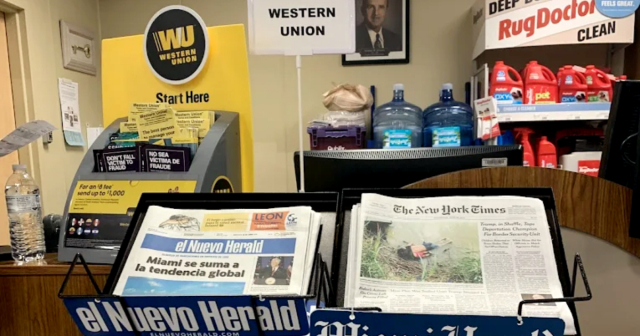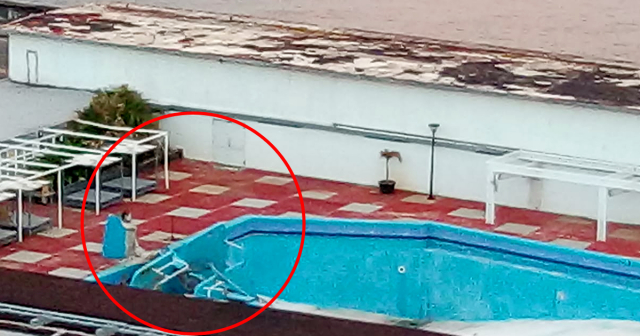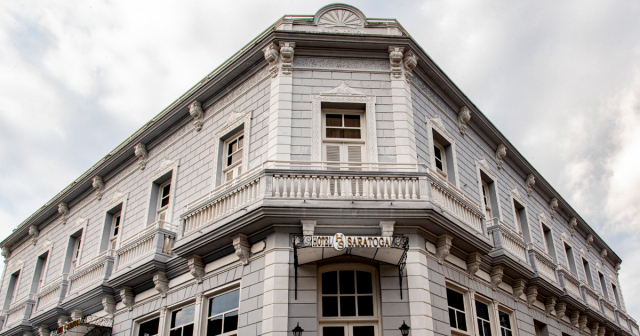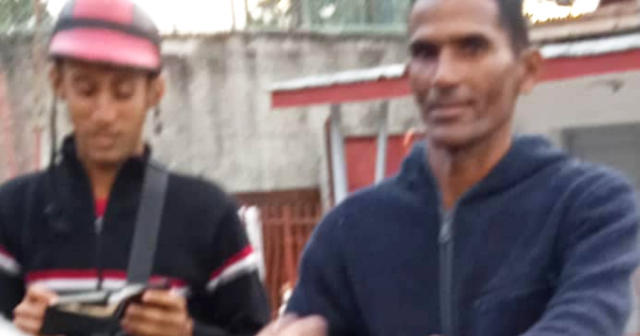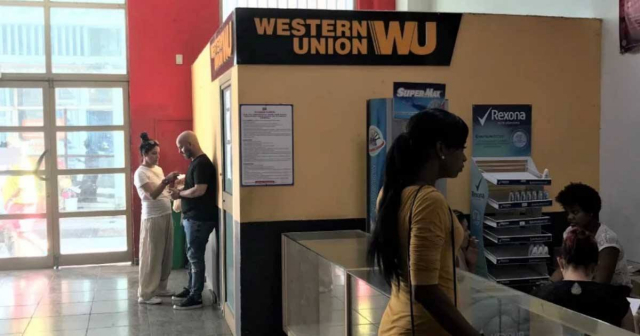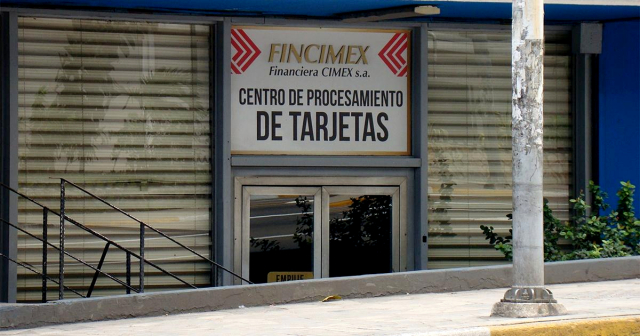
Users on social networks denounced this week theeviction of families in the coastal town of El Ramón de Antilla, in the eastern province of Holguín, as part of an ambitious tourism development plan in the area led by Grupo de Gestión Empresarial S.A. (GAESA).
On digital platforms, photographs and videos began to be shared in which members of the Ministry of the Interior raided homes with the intention of forcibly displacing the families that still remain in El Ramón. But this migration in exchange for hotels that do not benefit the Cuban population took place in 2017.
That year, the Cuban government approved a plan to expand the tourist hotel plant for the province of Holguín where, according to statements by the prime ministerManuel Marrero Cruz, then tourism minister,“The most important decision is the development of the Ramón de Antilla peninsula”, with capacity for at least 19 thousand rooms.
Since then, the fate of the locals has been cast.
What is happening in El Ramón de Antilla?
“El Ramón de Antilla is currently invaded by red and black berets, because GAESA is building several luxurious hotels on its beaches, and they do not want its residents, my family, nearby”Alexander Silva denounced on Facebook on October 5 and asked for solidarity to prevent them from being evicted.
Silva was followed by others who published videos of the moment they tried to evict families from Ramón. Repressive forces and two buses parked to transport them were waiting on the embankment that crosses the village.
In one of them, a woman is heard saying that that neighborhood was built to honor Camilo Cienfuegos and that they are destroying his legacy in that town. In another video you can see a group of very humble people shouting “I am Fidel.” The latter are convinced that what is happening to them is because Fidel Castro is no longer here, because if he were there, he would not allow it.
“After that day they calmed down”said Silva in reference to the repercussion of the attempted eviction by the repressive forces.
“People are afraid to speak,” says a native of Ramón toCyberCuba-; "They have summoned several of those who demonstrated and have fired some who work in the construction of the hotels.".
Around 60 families in total lived in El Ramón. According to testimonies from Antilleans with whomCyberCuba has been able to talk, approximately 30 families still remain in the place.
The El Ramón de Antilla peninsula is a coastal community of just over a thousand inhabitants located in Nipe Bay, 100 km from the city of Holguín. Agriculture and, fundamentally, fishing are the livelihood of the residents in that piece of virgin oasis, until GAESA arrived.
It is also a natural area protected by the Ministry of Science, Technology and Environment of Cuba, due to its exotic and endemic species, and habitat of theCerion alberti, a mollusk "unique in the world", according to Loiza González Collazo, head of CITMA in the province. The hotels planned to date do not have the ecological classification like the Villas Balcón de Viñales or Loma Esmeralda; At least, they have not been announced as such.
The state built an apartment complex in Antilla to house the Ramón families, 20 kilometers from the place where they had lived for generations. They named the new community “Camilo Cienfuegos”, to retain the symbolism of the one built in El Ramón by the Hero of Yaguajay, from where they intended to evict its residents on October 5, according to reports from Holguín residents.
Motivated by the better construction conditions of the properties, some families moved voluntarily. Others preferred not to do so and, for that reason, are under harassment.
When did the problems start?
It was enough that thatholding capitalist, owned by the Cuban military high command called GAESA, set its eyes on this virgin peninsula of the coastal municipality of Antilla, so that the lives of its inhabitants became unsustainable.
Some of those who voluntarily gave their houses and coastal lands to GAESA thought they were making a great deal. They were changing an old house for a new one. By September 2020, of 288 households planned for resettlement,“130 were received by residents of El Ramón, greatly benefited in many cases, and that process will continue”, according to the newspaperRebel Youth.
However, the new homes were far from their main means of subsistence, fishing, and at this time some feel sorry for having left their community and their work. The experience of those who have already left has made those who still live in El Ramón not want to leave.“If they get them out of there, what are they going to live on?”, Silva asks.
At first, Silva confirms toCyberCuba, the authorities assured them that they would have guaranteed work in the new tourist center, however, and although it is true that "some have been given work in the hotel that they already built", the majority have not been able to obtain employment there.
“That is a humble community,” says another source from Antilla, “the majority of people do not have much training, and that was precisely the excuse for not giving them work in the hotel.”.
Named Baracutey 59, this first hotel was scheduled to complete its construction in 2020, as announced by the Gaviota Military Group, also owned by the military, and its cost was projected at $161 million, according to an investigation by The touch. At the beginning of this year it began to provide services to international tourism.
However, “most of the workforce is brought daily by buses from Nicaro, Mayarí, Banes, Holguín", according to the testimony of Silva who is of the opinion that“It does not benefit the community at all, since only a few have been given work in construction.”
GAESA intends to isolate the inhabitants of Ramón
Another problem faced by the residents of Ramón, whose settlement is located two kilometers from the luxurious hotel, is that “They have taken away public transportation and are not allowing them to use any of the GAESA buses.” to move from Ramón to the municipal seat, Silva said. They have also closed businesses to slowly suffocate and isolate them until they have no other alternative but to leave their community, he adds.
A local man comments that a high military leader assured the neighbors that the area had to be cleaned in order to build hotels, and that anyone who refused to leave Ramón would demolish their house with bulldozers, if necessary.
“The leaders of our municipality” tell the inhabitants of Ramón that “it is a necessity of the country to get us out of here”said an Antillean woman via Facebook. However, the young woman believes that they should close the “UCM” due to the high number of infections and deaths from coronavirus in the municipality. It refers to the Military Construction Union (UCM), which is also owned by the Cuban military and one of the companies in charge of the works.
However, he adds, “our dead do not appear anywhere... because it is an agreement not to close the UCM; That cannot be stopped, but we can all die, that is a priority.”
The same Cuban indicated in mid-September that the priority is to displace the native population to build hotels, for which, in addition to cutting off transportation, they have also threatened to close businesses and the Ramón school.
“Getting us out no matter what, that is a priority... so I want you to tell me how you are going to get me out (kicked). I don't want an apartment, I don't want anything. Are they going to take me to the school, the store? Let them take her!”, said.
What is happening is not new. It had happened before in Guardalavaca, especially on the coast, where some residents have endured years of intimidation, harassment and evictions due to the excessive ambition of military monopolists who believe that all of Cuba is their backyard.
What do the residents of Ramón say about GAESA's intentions?
On social networks, Cubans have conflicting opinions. Some think that the Ramón houses “have been built for 60 years and are in perfect condition,” while the newly built apartments “have already been repaired, and many are asking for a second repair.”
It is also aired that The authorities “what they want is to get them all out and put them in those apartments to keep the land of these families.”
Others, on the contrary, argue that“The hotels that GAESA builds in Ramón de Antilla not only increase the tourist capacity of our country, but also increase jobs for Cubans.”
Furthermore, they add, that“Thanks to our government, today we have houses with greater comfort and far from the attacks of possible natural events.”
There is another group that points out that the multi-family buildings were only made for the displaced people of Ramón because it is an interest of the government to exploit the lands of the inhabitants of the peninsula. By contrast,“The inhabitants of other homes in Antilla – guano huts – are not prioritized with better living conditions.”
According to official data, in 2019 Holguín was the second Cuban province with the highest housing deficit, with more than 115 thousand, only surpassed by Havana. The records of the National Office of Statistics and Information (ONEI) show that only 4,669 homes were built that year, of which 1,543 were built by the state and the rest by private initiative.
The truth is that, in the words of another local, “if someone is not interested in negotiating, they should not be threatened with retaliation. And they are doing that, which is very wrong and leaves a lot to say and feel.”
What is the tourist importance of this Holguín peninsula?
The northern coast of Holguín, famous for its natural beauties and its very white sands, is the target of sun and beach tourism for the military in Cuba and historical tourism. “It is a totally virgin area, with magnificent beaches, located in Nipe Bay itself, very close to Cayo Saetía and that has a very great development potential,” said Marrero Cruz.
Antilla borders the municipalities of Banes and Mayarí. In the first one is the tourist center of Guardalavaca, 57 kilometers from the city of Holguín, a beach practically taken over its entire sandy coastline by hotels whose prices are impossible for Cubans to pay with their salaries. Also in Banes is the Chorro de Maita Museum, with one of the most impressive aboriginal finds in the country.
As for the municipality of Mayarí, Cayo Saetía is located here, the traditional hunting preserve of the Castro Ruz family, right in front of the Ramón, and the Felton thermoelectric plant, as well as the airfield of the town of Guatemala. Beyond its crystalline beaches, El Ramón is located between Guardalavaca and Cayo Saetía, forming part of the Holguín tourist hub, the fourth most important in the country, according to Marrero Cruz.
Faced with the need to expand hotel capacity, GAESA demolished pioneer camps on the beaches of Estero and Cayo Saetía and broke the promise of leaving Pesquero Beach for ordinary Cubans, today monopolized for guests of its luxurious hotels; while he built a National Park in Bahía de Naranjo, between Guardalavaca and Pesquero, whose dolphinarium and pier cannot be accessed by the residents of the island, for fear of the authorities that they will hijack one of their boats to flee the country.
El Ramón also has a rich history that includes the presence of pirates and battles against the Spanish army for the independence of Cuba. Hence the need to conquer this unexploited spa, even if this implies the forced expropriation of the land.
money issue
The announcement in 2017 of an ambitious “Tourist planning plan for the El Ramón de Antilla peninsula” that envisages the construction of 19 thousand rooms in this remote place in Holguín's Nipe Bay, is not good news for those who refuse to abandon their properties in Ramón de Antilla.
Although the specific amount of investments in this place is unknown, it can be estimated that it amounts to hundreds of millions of dollars. Suffice it to mention that just the two hotels projected in 2017 total 326 million, according to research byThe touch.
In 2018, the companyHotel tour It classified it as “the most important development project that the Cuban State is currently facing in the eastern province of the island,” in which in 2017 they had invested more than 20 million dollars. The investment in the Ramón de Antilla also contemplates expansion of social infrastructure, to support the logistics of the hotel industry, from workforce to services such as hospitals, schools, markets and roads.
Only between 2018 and 2019, the state spent at least 90 billion on road maintenance and construction. Of them, 48.9 million in 2018 and more than 40 in 2019, reportedPavel Rodríguez Rodríguez, director of the Provincial Road Center.
Everything, “so that in the near future tourists can, in addition to bathing in the virgin beaches of the Peninsula, enjoy the values of the small Antillean city,” according to an article in apromotional post.
To these figures we must add the inauguration, in December 2020 and in the middle of the pandemic, of the Antilla Granelera Railway Station, to “supply cement in bulk from the Cienfuegos S.A. production plant. to the investments made in this area, in tourism, agriculture, mining, renewable energy and hydraulic works, among others that demand a large amount of the material."
The report given by the local press It does not specify how much this project amounted to, the corporate purpose of which is to create a railway track and a cement storage site in the very heart of GAESA's new investment, and in whose construction at least seven companies and organizations participated.
The works are carried out by the UCM del Ramón de Antilla and Bouygues Batiment International (BBI), a French multinational specialized in high-tech construction projects, with a strong presence in Cuba, in the tourist centers of Varadero, Cayo Coco, and in Havana.
GAESA, UCM and other military companies involved in the exploitation of the Ramón dominate around 70% of the Cuban economy, and are the great monopolizers of the wealth and sectors that contribute the most income to the country.
Military power in business in Cuba is the nightmare of small Cuban owners banned from opening their own hotel. GAESA would be what the United Fruit Company was in its time, before the laws that regulated the power of monopolies. Going against them is like swimming against the current.
Given the enormous capital at stake and the military and foreign interests of powerful groups behind the Ramón, it is not difficult to imagine that the problems of the humble Cubans who live there are just beginning.
What do you think?
SEE COMMENTS (1)Filed in:

